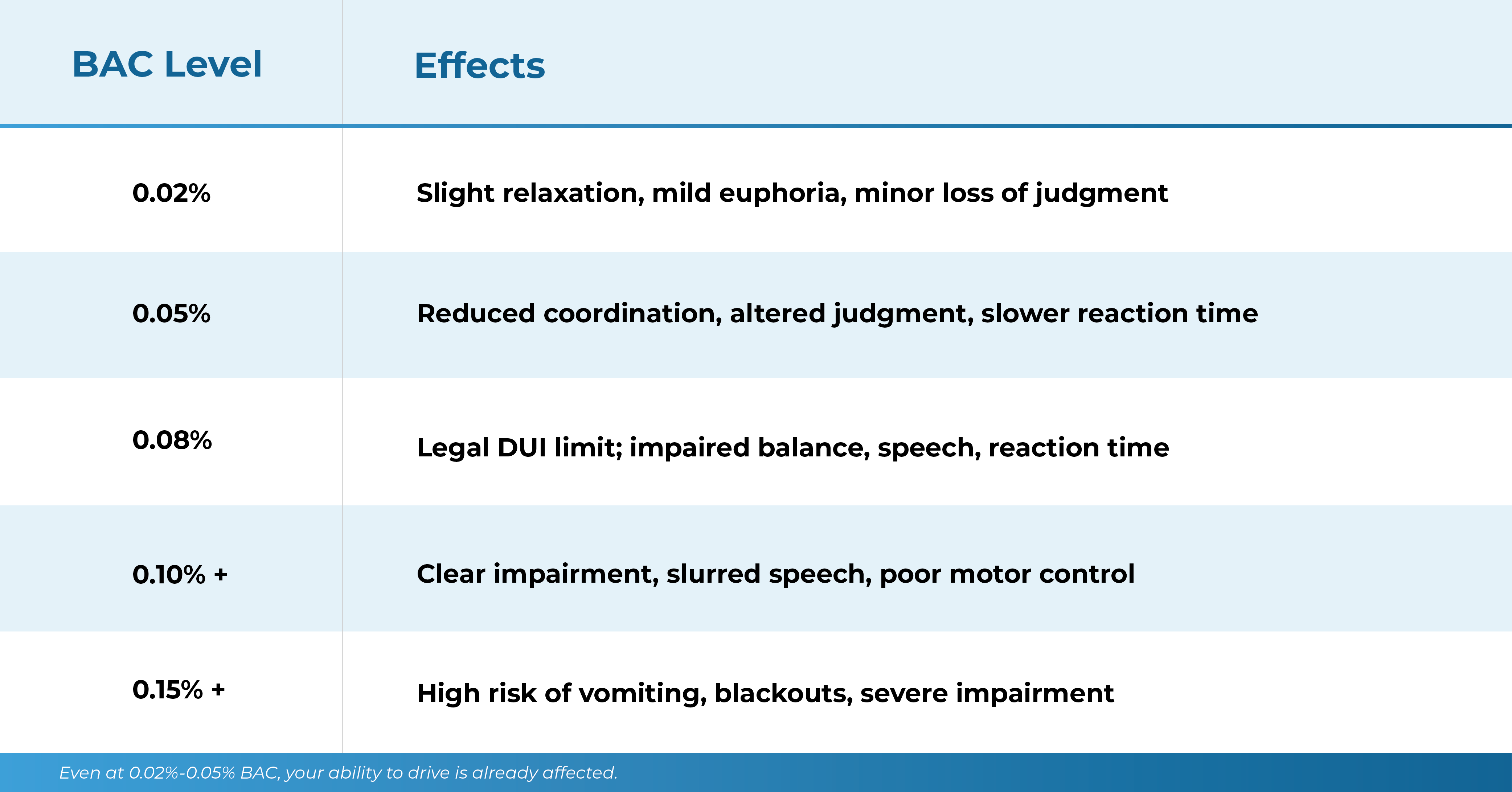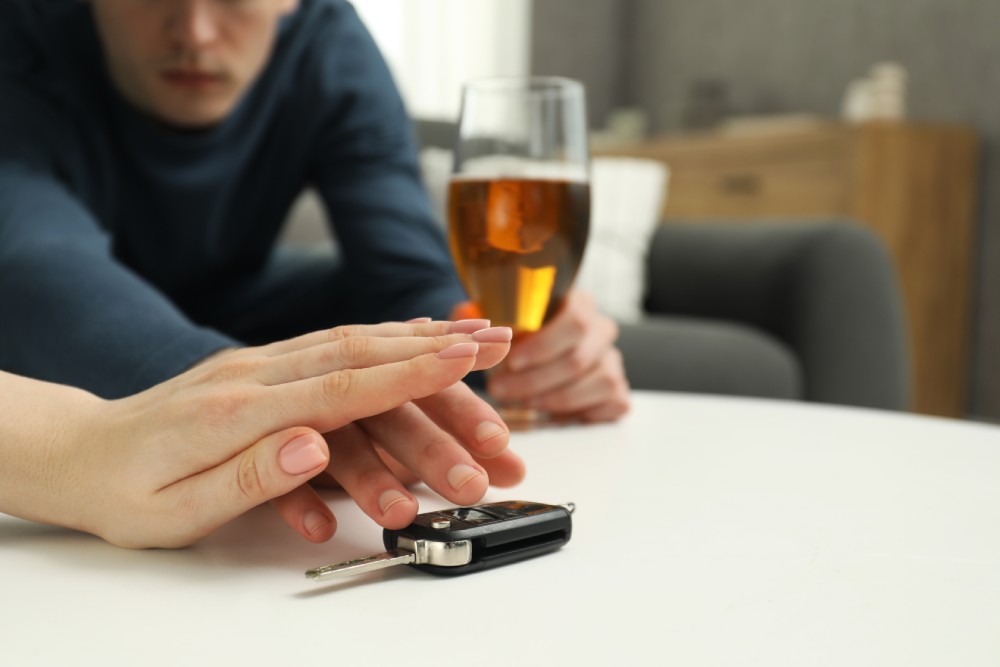One of the most common questions people ask after having a drink is, “How long should I wait before driving?” The problem? There’s no one-size-fits-all answer. Alcohol affects everyone differently, and what might feel like “sobering up” doesn’t always mean you’re actually safe to drive.
So how long does it take for alcohol to leave your system? Let’s break down how alcohol is absorbed, how BAC is calculated, and how to make safe decisions before getting behind the wheel.
How Alcohol Absorbs Into Your System
When you consume alcohol, it enters your bloodstream through the stomach and small intestine. From there, it’s metabolized primarily by the liver, but the process isn’t instant—it takes time for your body to break down alcohol and eliminate it.
Factors That Affect Alcohol Absorption
Not everyone metabolizes alcohol at the same rate. Several factors determine how long alcohol stays in your system:
- Body weight & composition – A heavier person will typically have a lower BAC than a smaller person after the same number of drinks.
- Gender – Women tend to have higher BACs than men due to differences in body composition and enzyme activity.
- Food intake – Eating before or while drinking slows alcohol absorption, while drinking on an empty stomach speeds it up.
- Metabolism & genetics – Some people break down alcohol faster than others, affecting how quickly they sober up.
- Type of alcohol consumed – Hard liquor, beer, and wine all affect BAC differently based on alcohol content and serving sizes.
Understanding BAC (Blood Alcohol Concentration)
Your Blood Alcohol Concentration (BAC) is the percentage of alcohol in your bloodstream. In most states, 0.08% BAC is the legal limit for DUI, but impairment can start well before that.
BAC Levels & Effects

How Long Does It Take Alcohol to Leave Your System?
On average, the body metabolizes alcohol at a rate of 0.015% BAC per hour. This means:
- If your BAC is 0.08%, it will take about 5-6 hours to fully sober up.
- If your BAC is 0.15%, it may take 10+ hours before alcohol is eliminated.
Common Misconception:
🚫 Coffee, eating, cold showers, or energy drinks DO NOT speed up alcohol metabolism. Only time will sober you up.
The “One Drink Per Hour” Rule – Does It Work?
A common myth is that your body processes one standard drink per hour, so if you “pace yourself,” you’ll be fine to drive. However, this is misleading because:
- “One drink” varies in size and alcohol content (a cocktail may contain more alcohol than a single beer).
- Drinks add up quickly—if you have multiple drinks in a short time, your BAC will rise faster than your body can metabolize it.
- Alcohol effects last longer than people think, and even “below the limit” drivers can be impaired.
How Long Should You Wait to Drive?
While individual factors vary, a general rule of thumb is to wait at least:
- 1 hour per standard drink (for lower BAC levels)
- 8+ hours after a heavy night of drinking
- 24-48 hours if you’ve been binge drinking
If you aren’t sure if you’re sober, don’t risk it—find another way home.
What Happens if You Drive Too Soon?
Even if your BAC is under 0.08%, you can still face DUI or “wet reckless” charges if an officer determines you were impaired.
🚨 Driving with ANY alcohol in your system under 21? Zero-tolerance laws mean you can be charged for a BAC as low as 0.01% in many states.
🚔 If caught driving impaired, you may face:
- Fines, license suspension, or jail time
- Increased insurance rates
- Ignition Interlock Device (IID) requirements
Better Safe Than Sorry – Alternatives to Driving
If you’ve been drinking, here are safer options:
- Use a rideshare or taxi – Even a high-priced Uber beats a DUI fine.
- Get a designated driver – Plan ahead before you start drinking.
- Stay the night – Crashing on a friend’s couch is safer than crashing your car.
- Wait it out – Give your body time to metabolize the alcohol before driving.
Final Thoughts: When in Doubt, Don’t Drive
There’s no magic formula for when it’s “safe” to drive after drinking. The only guaranteed way to avoid a DUI or accident is to not get behind the wheel if you’ve been drinking.


